
GUEST BLOGGER MARTA MAGELLAN
Images in nonfiction picture books are not merely attractive to young readers, they add crucial meaning to the story. Both photographs and illustrations clarify the elements of storytelling found in the text (theme, narration, point of view, etc.). Python Catchers Saving the Everglades (Rowman & Littlefield/Pineapple Imprint) uses both photographs and illustrations to get its theme across—Burmese pythons imported for the pet trade are causing havoc in the Everglades ecosystem, and that by extension, all pet-buying decisions need to be made carefully.
Reading the cover images
- Show your students the cover of Python Catchers Saving the Everglades. Notice the photographs of real animals and the illustrations.
- Ask students what they can deduce about the Everglades by looking at the photoghraph. Possible answers may include: swampy, filled with alligators, wading birds, bushy plants, no tall trees
- Ask students to look at the illustrated characters flying through the cover. Can students names these two Everglades animals? Answer: wood stork and marsh rabbit.
- Ask students to speculate why these characters on on the cover.
- Using the cover as a guide, ask students to list reasons why the Everglades is different from where they live? Possible answers include: wetter; some dangerous animals; looks hot, not cold or snowy; doesn’t have the same kind of tall trees; doesn’t have hiking paths; more wading birds.
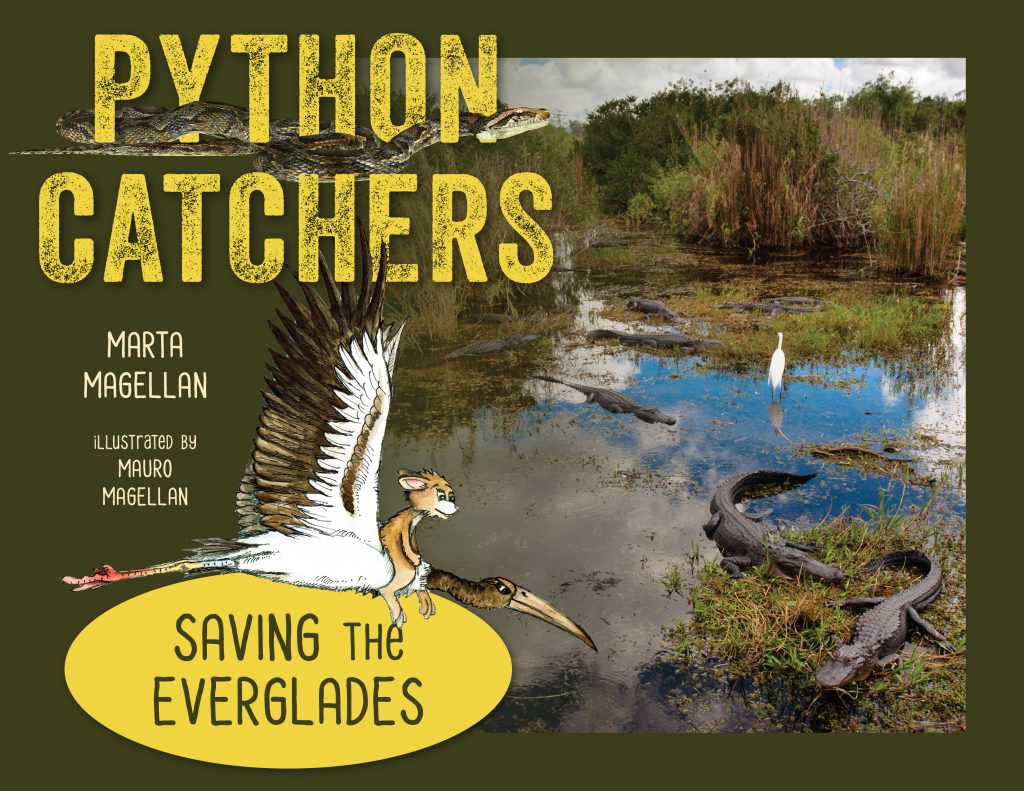
Reading the photographic images
- Read the main text of the book through once, allowing students to look at each photograph.
- Is this a true story, or a made-up one? Fiction or nonfiction?
- Which shots depict the setting?
- Which photographs required a closer look to better understand the vocabulary? [camouflaged pythons]
- List the action shots in the book.
- Which photographs have details that make the text clearer to understand?
- Which photographs best deliver the theme or main idea of the book? [several showing pythons as a threat to the native animals]
- How can the theme or main idea of this book be applied to other pets set loose in wild places?
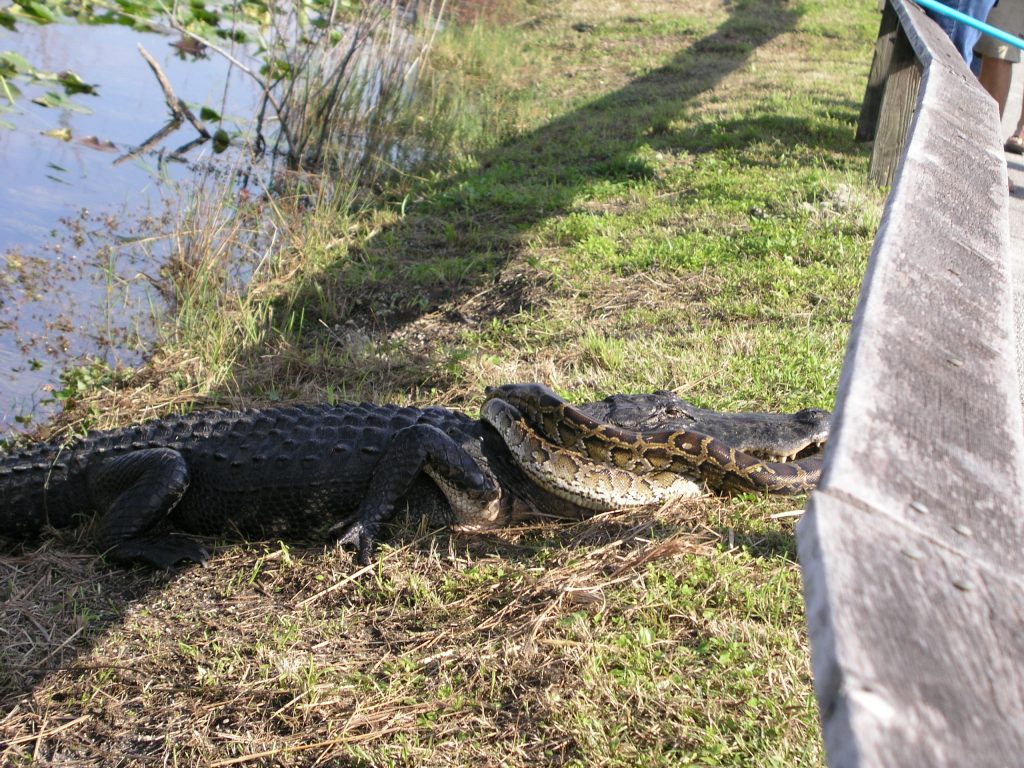
Reading the illustrated images
- Go over the book again to look at the illustrations. Ask if they are fiction or nonfiction.
- From whose point of view is the book told?
- Which cartoon animal is the narrator?
- Why do you think there is dialogue between the two cartoon characters?
- Which animal is created to bring some humor to this grim subject?
- What reason did the author have to use a cartoon animal as a narrator instead of a person?
Writing and Illustrating Activity
- Show students “What You Can Do” in the back of the book.
- Ask the students if they had pets that they set loose or that escaped (including cats, birds, fish, etc.). Research in your school library or on the internet—can that type of pet become invasive? Does it cause trouble when it becomes feral (wild)?
- Write down the article or book titles, author, publisher, and date of your sources.
- If you have never had a pet, do research on any pet that has become invasive.
- Write a nonfiction essay about that invasive pet from the point of view of a native animal.
- As in Python Catchers draw a native animal that the invasive pet is hurting to narrate the story. Add a few jokes to add humor if you wish.

Marta Magellan, former award-winning professor of English and Creative Writing at Miami Dade College now writes children’s books full time. She has published eight books on animals and their importance to our ecosystems, as well as many articles for magazines and newspapers. Her books have received positive reviews from Children’s Bookwatch, Midwest Book Review, Family Magazine, and San Francisco Book Review. She is a critique group leader for SCBWI FL, and a member of #STEAMTeam2020. To learn more about her, visit her website at www.martamagellan.com and follow her on Twitter: @MartaMagellan
Click for more LITLINKS STEM + Literacy activities
Featured image credit: “Pilot Python Elimination Program” by SFWMD is licensed under CC BY-ND 2.0


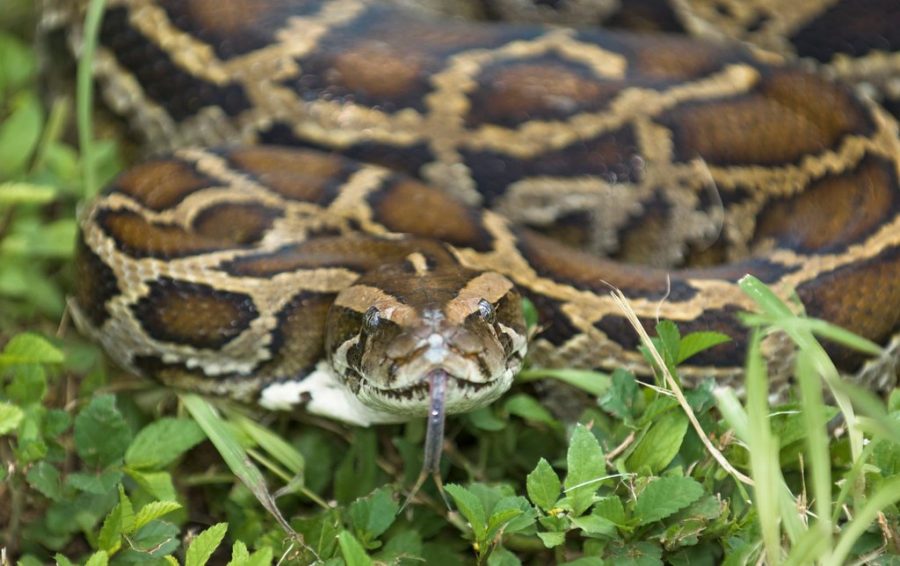
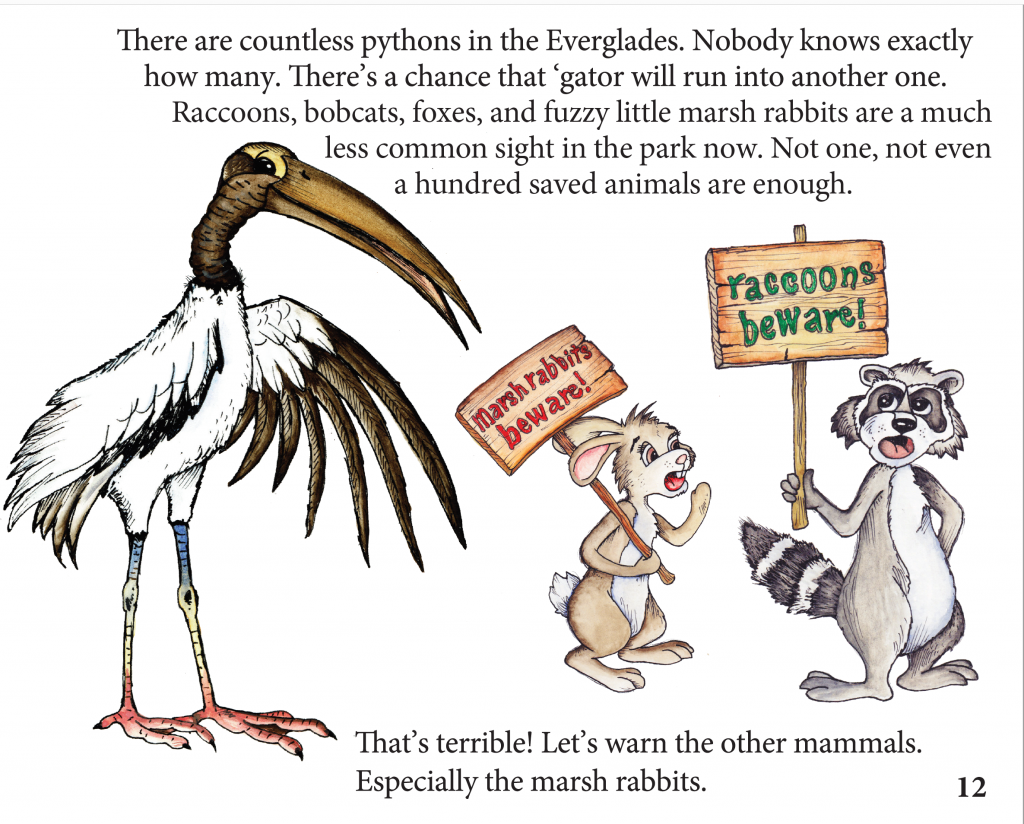
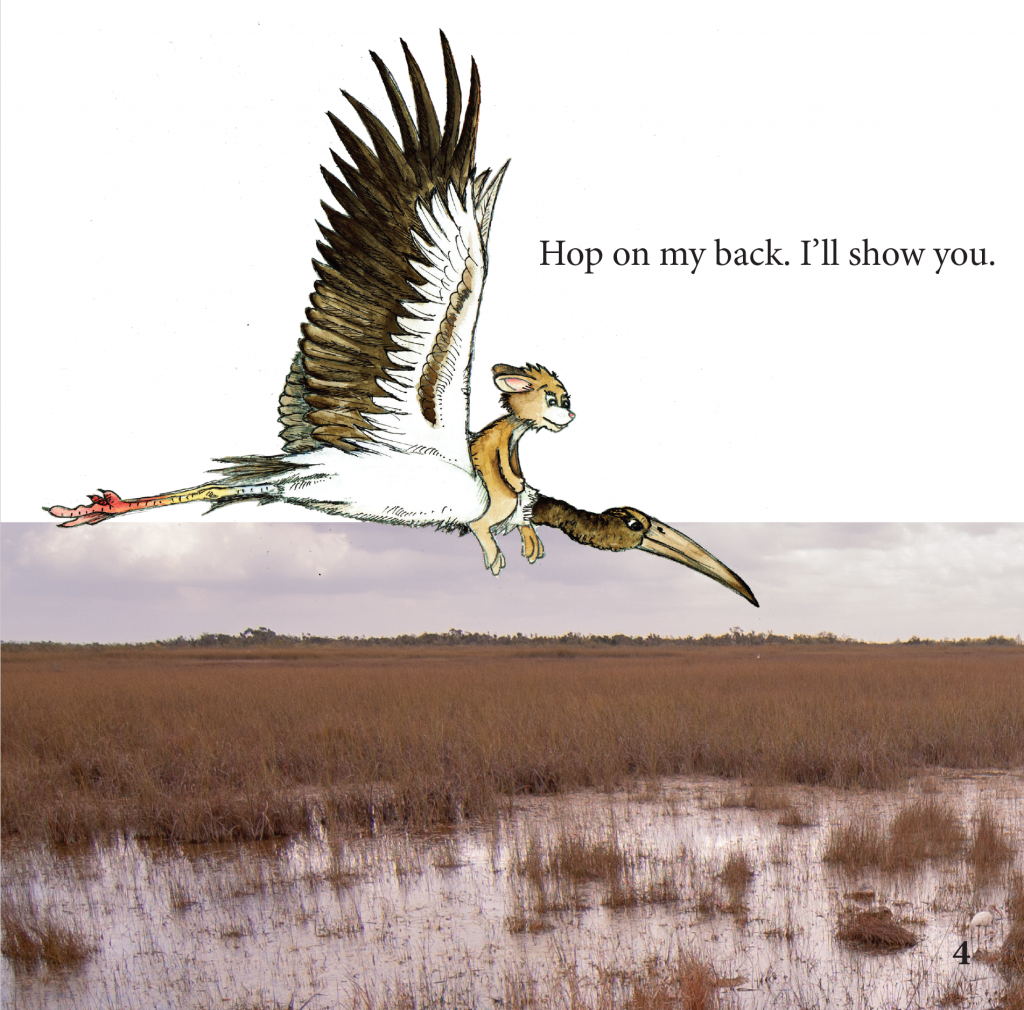

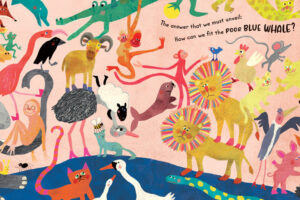



1 Comment
Leave your reply.